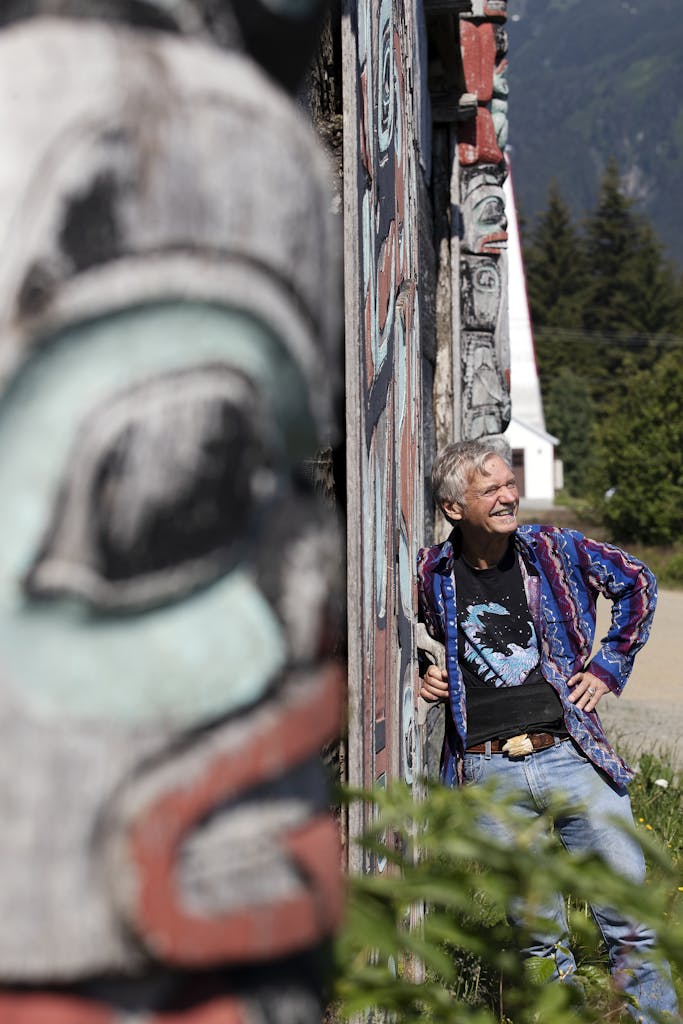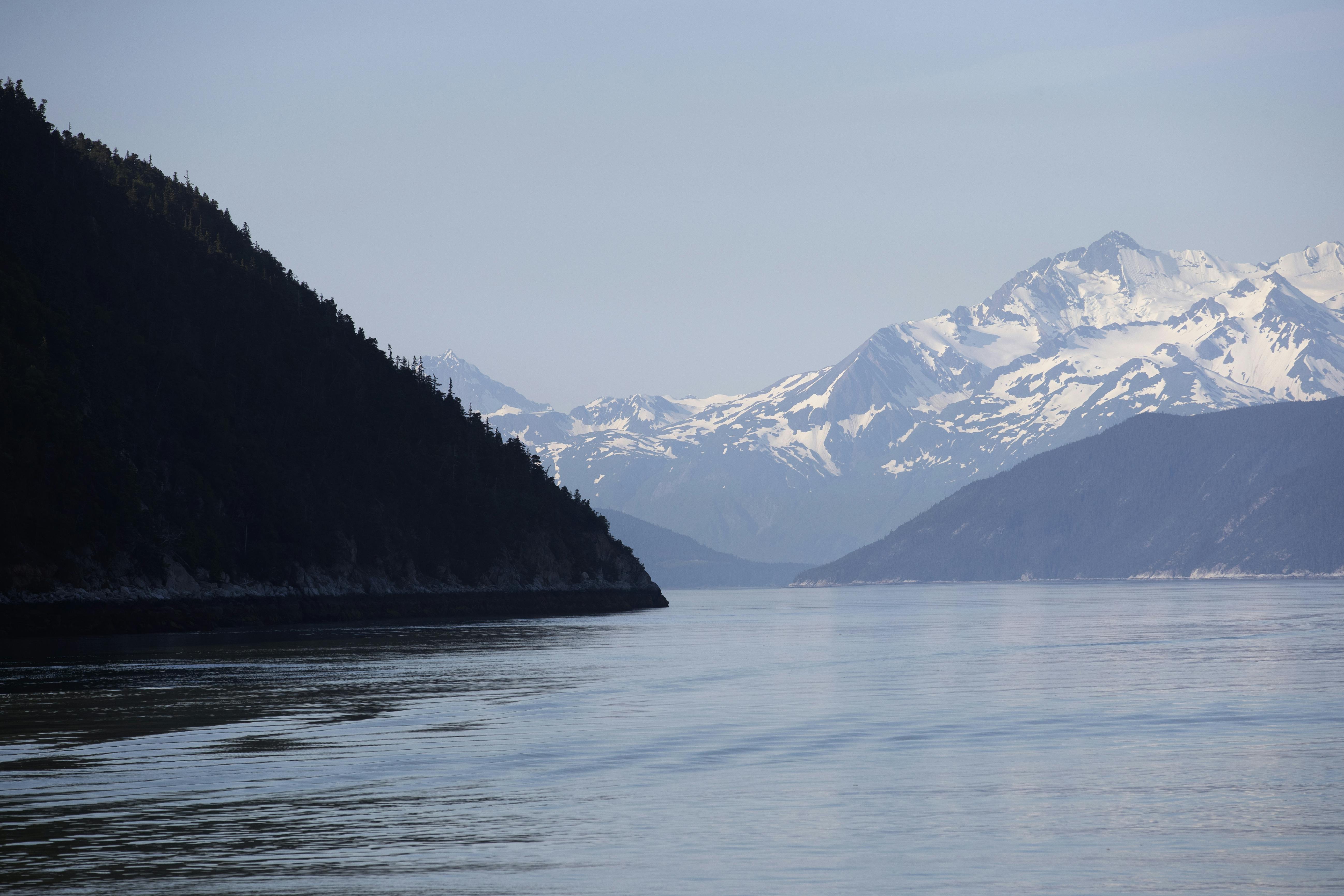The Spectacle and the Intrigue That is Haines, Alaska
Ringed by snow-clad peaks, clasped between the viridian waters of two ocean inlets, basking beneath the cornflower skies of the North Pacific, Haines is among the most photogenic places on this planet. This small, semi-isolated Southeast Alaska city is as visually memorable as it is metaphysically charming, and whether you store your experiences here in the iCloud, or in humanity’s original data gallery (your questing mind), the memories will last years.
“What’s great about Haines is the diversity of things to see,” says local guide, author and photographer Joe Ordonez of Rainbow Glacier Adventures. He’s a local dynamo who is the author of Where Eagles Gather, the story of the Alaska Chilkat Bald Eagle Preserve. Ordonez’ book pays homage to a famed stretch of the river north of Haines along which, in fall and winter, thousands of eagles congregate.
“For scenery and landscape photography,” he tells me, “Haines is difficult to surpass. The glacier-draped Chilkat Mountains rise directly out of the sea. There are two unique river valleys, the Chilkat and Chilkoot, that are easily accessible from Haines.”
Each river is distinctly different — one a surging glacial torrent, the other a serene forested watercourse — but both are excellent wildlife watching venues, and local adventure operators such as Ordonez provide day trips into both valleys.
“For scenery and landscape photography,” he tells me, “Haines is difficult to surpass. The glacier-draped Chilkat Mountains rise directly out of the sea. There are two unique river valleys, the Chilkat and Chilkoot, that are easily accessible from Haines.”
It’s just as Haines itself holds a subtle but compelling capacity to enter the visitor’s spirit. Look once, all is spectacular. Look more closely, it’s intriguing. Then close your eyes and look more deeply still to see what you may find.
Whether your ship is docked in Haines — a rare port of call at which Silversea is one of the few lines visiting — or Skagway, experiencing Haines is easy. High-speed tour boats, such as those offered by Ordonez, pick up travelers in Skagway, then Haines, and then head up either the Chilkoot or Chilkat valley; tours range from $100 up, depending on your point of origin, and the journey to and from Skagway is a very scenic two-hour passage.
Don’t miss the sail-in and sail-away

The splendor begins long before you ever reach port as your ship enters Lynn Canal north of Juneau and begins the three-hour passage. This is one of the world’s longest (90 miles) and deepest (2,000 feet) fjords, and its faceted indigo surface hints at all that lies beneath. Often that includes charismatic marine residents such as humpbacks, gray whales, orcas, Steller sea lions and more.
To the east lie rugged snowy peaks marking the Coast Range that separates Alaska from British Columbia. To the west are rugged snowy peaks, including 15,300-foot Mount Fairweather, marking a corner of Glacier Bay National Park and the boundary between the U.S. and Canada. And to the north, yes, rugged snowy peaks.
This ever-present panorama frames the more immediate vistas once you arrive in town. Haines has just 2,500 residents, a couple dozen streets, no stoplights and a compact collection of cafes, coffee shops and stores. Mountains and trees, water and sky infuse every sightline; while you’re strolling, keep an eye out for Alaska’s smaller-scale marvels, such as the richly elegant grace of chocolate lilies or the melodious dance of summering songbirds.
The Jeffersonian-style, forest-green and ivory clapboard Hotel Halsingland presides beside the former Fort Seward parade ground like the grande dame it is. At the top of the parade-ground-now-park, old Officer’s Row houses perch primly. The view down to the harbor affords a couple dozen different shades of blue and green with names like cyan, azure, emerald and sage. In the distance eastward, Coast Range pinnacles call to mind ivory and ice.
Head inside for spectacular culture

Not all the spectacular sights are outdoors. The Jilkaat Kwaan Heritage Center in Klukwan, 21 miles up the highway, is the sparkling new home of the famous Whale House Collection, a set of 19th-century elaborately carved house posts and a screen panel that many experts consider the finest historic examples of formline design Northwest Coast artwork in the world. Brought back home to the Chilkat Valley a decade ago by court order, the power of the art reflects the power of the place. (No private pictures here, please.)
“It’s the Mona Lisa of indigenous art,” declares Aldona Jonaitis, retired director of the University of Alaska-Fairbanks Museum of the North. “Like the Sistine Chapel,” adds Alaska State Museum curator Steve Henrikson of the 200-year-old artworks, which were rarely seen and enjoyed mythic status until they were installed at Jilkaat Kwaan in 2016.
Here’s the back story of why Jilkaat Kwaan Heritage Center in Klukwan is so worth the trek. The Whale Collection was in a decaying longhouse in Klukwan that was falling down. One local family snuck the pieces out of town, then an art dealer offered them millions on behalf of a collector, and away they went — the most priceless examples of this art anywhere. The rest of the community filed suit; it went all the way to federal court, where a judge sealed them in a Seattle warehouse; and a tribal court finally ruled that the artifacts belong to the community, not the individual family. Back they came: The Rasmuson Foundation gave Klukwan a large grant to build the new center housing the artifacts. I hope that every visitor who gets anywhere near Haines goes to Klukwan, because the art and the story are world-heritage treasures and deeply thought provoking. (For one: Who does public heritage belong to?)
The other side of spectacularly scenic is quietly picturesque, and the area offers plenty of this too. The wide vale just below the Jilkaat center is a lush paradise of tall riverside cottonwoods where bald eagles roost patiently and tall wild rose shrubs scent the air. In spring and early summer, the bright pea green of skunk cabbage shimmers in wet spots, a favored food of awakening bears, lending a much different aroma to the breeze.
In town, don’t miss….

Back in Haines, a walk through town — all of it can be easily traversed in a morning or afternoon — takes you past small shops, galleries and the Port Chilkoot Distillery and brewery, admired far outside this Alaska outpost. You can sample spruce tips-flavored ale and gin, savor wild blueberry muffins, and of course take home smoked salmon.
In the tiny downtown, the Hammer Museum sounds like a dubiously quaint oddity — until you go in and encounter a rousing collection of what may be humanity’s most important tool: hundreds of hammers dating back thousands of years. Why Haines? Local blacksmith Dave Phal decided to put his personal collection on exhibit in 2002 (first in the world) and it has grown ever since. What you see are a hundred types of hammers; what you don’t see, until you look closely and assimilate the underlying message, is the key role these devices have played in human civilization.
“When you first come to Alaska, you’re overwhelmed by everything you see,” says long-time area river guide, chapbook author and philosopher Tom Lang, who spends his winters in Bali and has plenty of time to ponder the universe.
“After you’ve been in Alaska a while, you’re amazed by what you don’t see.” He’s referring to, for example, the fact that the riverbed beneath the Chilkat is a millennia-old accumulation of glacial till, 900 feet deep. But his notion has broad application in our infinitely complex, beautiful world.
That thought comes to mind one afternoon as Haines innkeeper Leslie Ross and I are cruising down the Yukon road back toward town just above Klukwan. Suddenly, two cinnamon coastal brown bear cubs dash across the road in front of us, slipping out of the underbrush and back in like roly-poly gremlins. We look at each other, stunned — and then we have the thought every seasoned Alaska resident or visitor has under these circumstances: Mama’s somewhere near.
No sign of her, though. A stopped car apparently poses no threat sufficient to provoke her appearance.
But, even clasped safely inside a massive steel vehicle, we can feel the power of the mother bear nearby, pulsing through the ether. It’s difficult to describe it beyond that, neither observationally nor scientifically.
It’s just as Haines itself holds a subtle but compelling capacity to enter the visitor’s spirit. Look once, all is spectacular. Look more closely, it’s intriguing. Then close your eyes and look more deeply still to see what you may find.
Excited to explore Haines on your Alaskan adventure? A wide array of Silversea itineraries call on this unique and scenic port.
